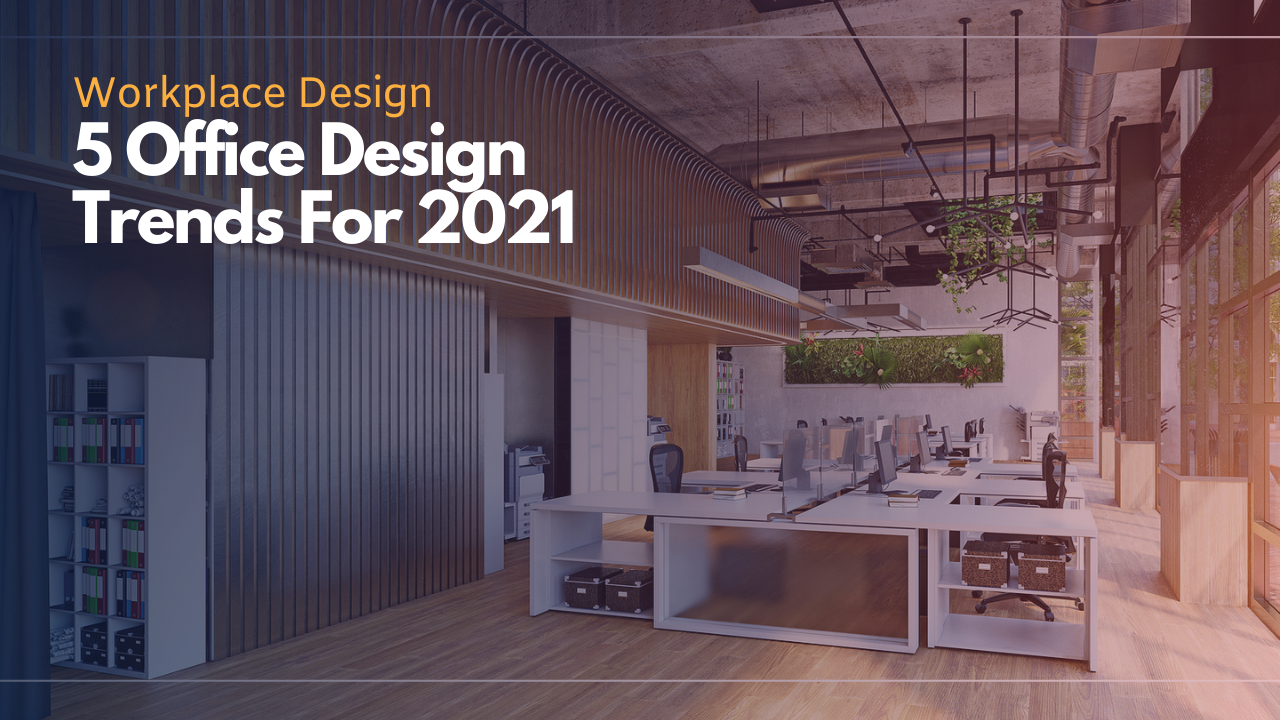- As we head into the new year, architects are reimagining how the workplace will look in 2021.
- Environments need to foster productivity and wellbeing while supporting physical distancing guidelines.
- From ‘resimercial’ design to sustainability, here are 5 design trends to look out for in 2021.
Reflecting on what’s happened over the last 12 months, architects around the world are reimagining how the office will look — and operate — as we head into the new year.
The big question is: how can our working environments best support remote working and physical distancing without compromising people’s productivity and sense of wellbeing?
According to trend forecasters, ‘resimercial’ design, videoconferencing, workstation neighbourhoods, design-led divisions and sustainability will play a key role in the office of 2021.
1. Resimercial design
Resimercial design mixes residential and commercial features to make employees feel at home in the workspace.
The trend emerged when Millennials and Gen Z — the people who grew up with technology and are familiar with the notion of working any time, any place — started to form the majority of the workforce.
Covid-19 is catalysing this trend. In 2021, expect to see decorative touches associated with the home environment and comfortable furnishings, particularly in breakout spaces.
Resimerical features include:
- Mix of textures/silhouettes
- Natural light/ambient lighting
- Wool rugs, large curtained windows
- Classic house plants
- Comfortable seating
- Durable upholstery
- Natural fibers
2. Videoconferencing provision
According to research by PwC, over half of executives expect to offer remote working in the near future and the majority of employees want to work from home at least part-time. So when we’re in the office, it’s likely that we’ll be interfacing regularly with remote employees.
With dispersed teams becoming the norm, videoconferencing will play a critical role in maintaining connection and facilitating collaboration.
The physical environment will have to adapt to accommodate screens, cameras and microphones, allowing teams to leverage videoconferencing to its full potential.
Expect to see:
- Smart interactive whiteboards
- Cameras and microphones that automatically hone in on speakers
- Multiple screens for large in-house meetings
- Reconfigurations based on acoustic needs
3. Workstation neighbourhoods
Large, open plan workstations have proven popular in recent years, however in light of widespread remote working, office designers are having to re-think layouts.
The fact that more of us are having to take more videoconferencing calls is making it harder for open plan workspaces to accommodate hybrid working because of acoustical issues.
To counteract this, office architects are grouping desks into ‘neighbourhoods’ for when teams need to co-locate. These neighbourhoods — also known as pivot spaces — are specific areas containing movable furniture that can be reconfigured with ease.
Neighboods are equipped with:
- Touchdown stations
- Digital whiteboards
- Dedicated videoconferencing rooms
- Work pods for individual work
4. Design-led division
A lot of office operators installed perspex or glass screens in the immediate aftermath of the outbreak to help mitigate the spread of the virus. However, some designers are now considering other design-led options that still enable physical distancing but a) are more visually appealing and b) will be a more viable long-term solution.
The challenge is to come up with ways of co-dividing space that won’t impede infection control or compromise the appeal and functionality of the space. At the end of the day, employees need to feel safe but they also want to feel connected to their workplace.
5. Sustainable offices
Today’s talent prioritises employers whose moral values align with their own, particularly when it comes to pressing topics like sustainability. Companies that are committed to reducing their corporate carbon footprints, prioritising employee wellbeing and ensuring diversity and inclusion are more likely to attract and retain the best talent.
A survey, which was the result of conversations with 1,000 employees at large US companies, found that nearly 40% of millennials choose a job based on the company’s approach to sustainability. Opting for a ‘green’ office is a way for companies to demonstrate a commitment to environmental causes to employees, customers and competitors.
Sustainable steps:
- Partnerships with cycle to work schemes
- Eco-friendly ways to dispose of rubbish
- Water-saving bathroom fixtures
- Energy-efficient lighting
- Environmentally friendly cleaning products
- Seasonal food offerings
- Recycled or organic fabrics, e.g. raw/organic cotton, linen, hemp, bamboo
Consulting with employees on office design
When it comes to designing workspaces, architecture firm Elkus Manfredi Architects has developed a step-by-step engagement methodology it calls ‘co-creation’, enabling them to address design challenges in a meaningful and inclusive way.
In an article for Fast Company on redesigning the office, Elkus Manfredi’s principal and director of interior architecture, Elizabeth Lowrey, explains how it works:
“The process systematically engages everyone at a company, from the mailroom team to the CEO in the executive suite, so designers aren’t guessing what users need but hearing from them directly. Every employee is a creative collaborator.
“We ask: “What do you need to do your job? What are your roadblocks?” We listen and analyze carefully, so that before we start sketching, we know what the real challenges and opportunities are. It’s all guesswork unless we ask.”
Ultimately, says Lowrey, employees want to return to the workplace in 2021 with “a sense of ownership, knowing where they belong and how to use the space comfortably because they had a hand in its design.”


 Dr. Gleb Tsipursky – The Office Whisperer
Dr. Gleb Tsipursky – The Office Whisperer Nirit Cohen – WorkFutures
Nirit Cohen – WorkFutures Angela Howard – Culture Expert
Angela Howard – Culture Expert Drew Jones – Design & Innovation
Drew Jones – Design & Innovation Jonathan Price – CRE & Flex Expert
Jonathan Price – CRE & Flex Expert













